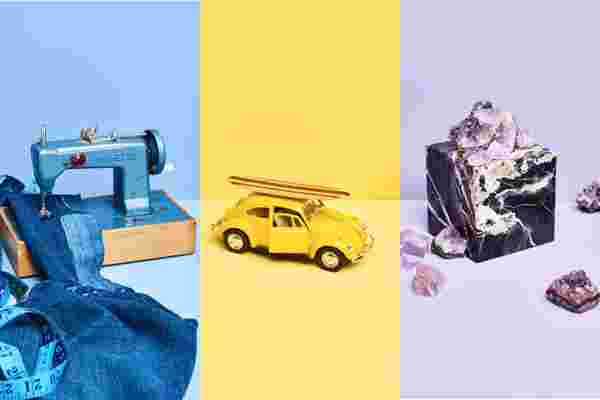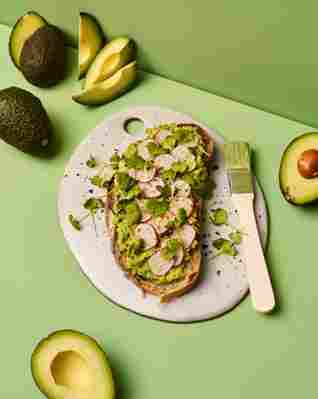
Picture this: you’re at the hardware store browsing for the perfect shade of paint to spruce up your guest room walls. As you make your way through the aisles, you spot a variety of options. “Cherry Cola.” “Agreeable Gray.” “Yellow Brick Road.” What on earth makes a gray “agreeable,” you start to wonder. Who chooses these names, anyway? Can I make that my day job?
As you may have guessed, it is a day job for some (very lucky and creative) people. Extensive research and collaboration are involved in the paint naming process, and to find out exactly what all of that involves, we talked with experts at some of the biggest paint brands.
What’s in a Name?
Just like choosing a lacquer at the nail salon, an attention-grabbing name is the first interaction most people have with a paint color, so it’s important to make a great first impression. To do so, many paint companies look for inspiration from all corners of the world.
“Whether searching online sources, traveling, attending design shows, grocery shopping or retail stores—even taking a hike in the woods—color inspiration can strike in the coolest places,” says Susan Wadden, director of color marketing at Sherwin-Williams .
That means you have full permission to channel your inner paint name expert and brainstorm paint names during your next outdoor run or hike. Whispering pine… breezy brook… hey, we have some ideas!
The direct-to-consumer company Clare places a heavy emphasis on pop culture.
“With Clare, I wanted to take a different approach and really showcase the brand’s personality,” explains founder Nicole Gibbons. “I also wanted to choose names that would really resonate and evoke emotion.”

Gibbons holds brainstorming meetings with her team, pulling ideas from Beyoncé (“Blue Ivy”) , to Cardi B. (“Money Moves”) , to food trends (“Avocado Toast”) .
“I love Nairobi Blue, which was inspired by Lupita Nyong’o’s iconic 2014 Oscars look,” she adds.
Make a List… and Check it Twice
Does it seem impossible to brainstorm—and keep track of—thousands of different paint names? Absolutely. That’s why checking for repeats is key.
“All potential names go through a vetting process to eliminate duplicative names from the existing library of more than 3,500 colors,” says Hannah Yeo, a color and design expert at Benjamin Moore , who notes that the names sometimes take several months to finalize. “We also ensure that these names are legally compliant and can bring a positive association to the customer.”
If you’ve ever wondered why paint colors are called “Old Blue Jeans” instead of just “blue,” this might be why.
Yeo adds that no one person is the official “namer;” rather, the process involves an entire group.
“Color naming is quite an involved process,” she explains. “It is a collaborative effort that spans across a wide variety of individuals and teams.”
And employees in other divisions also get the opportunity to chime in! “If the color is not specific to any product or collection, we get our creative minds together,” Yeo says. “When the time is right, the names are open to any Benjamin Moore employees who would like to participate.”
What the Customer Wants
So does a paint shade’s name affect its sales? Well, it depends. According to Erika Woelfel, vice president of color and creative services at Behr, beauty is in the eye of the beholder—and the paint shade you choose is no exception.
“At the end of the day, choosing a paint color is deeply personal and should always reflect your personal taste and style,” she says.
Woelfel says DIY enthusiasts tend to gravitate to approachable neutrals with names like Polar Bear, Silver Bullet, and Linen White. Color lovers, on the other hand, are often fans of brights such as Yellow Groove and Fire Cracker. And if the color you like has a punchy name? All the better. Woelfel herself is partial to a few in particular.
“I like quirky color names like Smoky Trout for a medium green-gray (great for exteriors) and Fashionista for an edgy amethyst,” she says. “ Intellectual is a dark gray that we thought maybe wasn’t descriptive enough, but has turned out to be a very popular color!”
Clever monikers aside, naming is ultimately done with the customer experience in mind, according to Woelfel. “We work hard to anticipate how a suggested name could be interpreted by a potential Home Depot shopper,” she says. “Each color tells a micro-story and gives consumers a better idea of what the color will look like in their personal space.”
A Multi-Sensory Experience
As if coming up with a name isn’t tricky in and of itself, some companies take into account the entire aesthetic to create multi-sensory experiences for its customers.
Take Harajuku Morning, one of Backdrop’s 51 shades, for example. While the light pink tinged with peach is certain to turn heads, the brand wanted to make buying this shade an emotional purchase.
“Inspired by a vacation we took in 2017 to Japan right before we had our daughter Colette, the color is like strolling down Takeshita street but without the crowds,” says Natalie Ebel. “We also have a Harajuku Morning playlist that represents what Harajuku Morning sounds and feels like.”
As far as we’re concerned, an accompanying playlist is perfect for a weekend spent dousing your walls in a fresh coat of paint.
